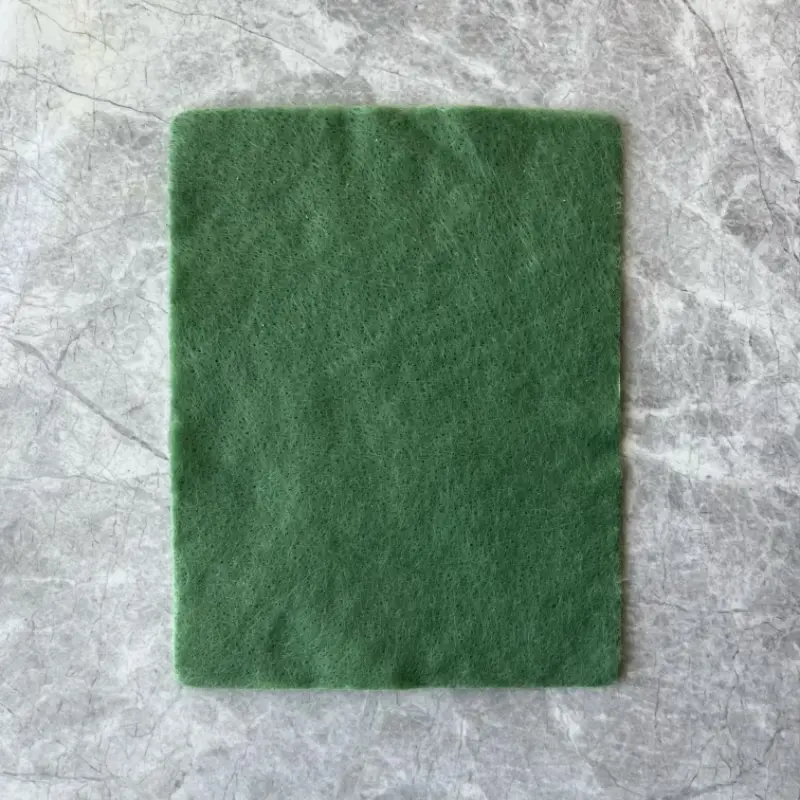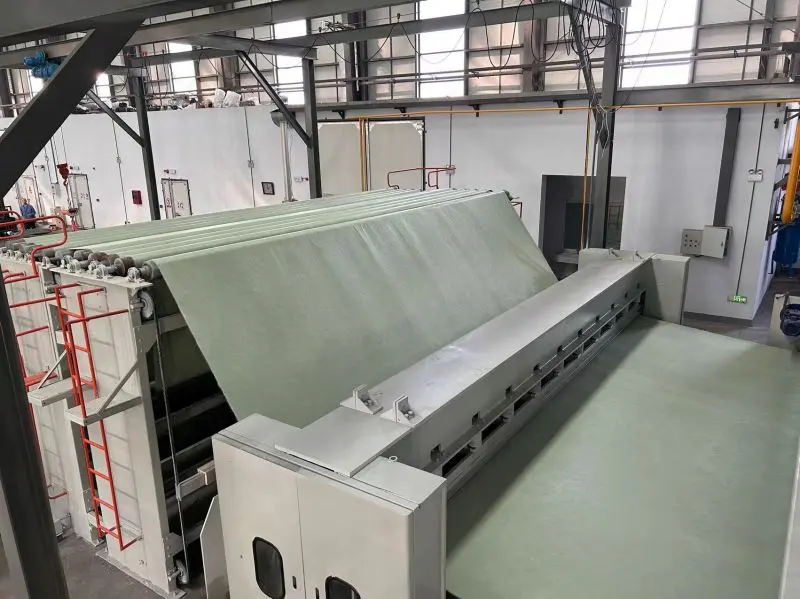What is filament needle punched geotextiles

A "filament needle punched nonwoven geotextiles" is a high-performance material used in civil and soil engineering, featuring long filament fibers for enhanced strength and stability, spunbond manufacturing for random fiber arrangement and bonding, and nonwoven construction for superior strength, permeability, and filtration properties. Specifically designed for geotechnical applications, such as erosion control, road construction, landfill engineering, subsurface drainage systems, and railway infrastructure, this geotextile offers versatile solutions to enhance soil performance and manage various engineering challenges.
Performance features:

Long filament spunbond nonwoven geotextiles stand out as multifaceted solutions in soil and civil engineering projects, offering a range of benefits crucial for diverse applications. Let's explore how their unique characteristics, including high strength, permeability, filtration capabilities, separation functions, chemical resistance, and flexibility, contribute to their effectiveness in addressing engineering challenges.
1, High Strength: The use of long filaments and spunbond manufacturing process contributes to the geotextile's high tensile strength, providing stability and durability in various engineering applications.
2, Permeability: Nonwoven geotextiles are known for their permeable nature, allowing water to pass through while preventing soil erosion. This feature is crucial in applications where drainage and water management are essential.
3, Filtration: The material serves as an effective filtration layer, preventing the mixing of different soil layers while allowing the passage of water. This is particularly important in geotechnical applications where separation and filtration are required.
4, Separation: Long filament spunbond nonwoven geotextiles act as a separation barrier between different soil materials. This prevents the intermixing of soil layers, maintaining the integrity of the structure.
5, Chemical Resistance: Depending on the specific polymer used in the manufacturing process, these geotextiles may exhibit resistance to chemicals, ensuring their performance in diverse environmental conditions.
6, Flexibility: The material is often flexible and easy to handle, allowing for straightforward installation in various construction projects. These features collectively make this geotextile a versatile and reliable material for addressing various challenges in soil and civil engineering projects.
Main applications
685451.webp)
Long filament spunbond nonwoven geotextiles have emerged as versatile and indispensable materials in various civil engineering applications. Their unique properties and wide-ranging benefits make them essential components in projects aimed at addressing erosion, enhancing road construction, managing landfills, improving subsurface drainage systems, and optimizing railway infrastructure. Let's delve deeper into how these geotextiles revolutionize each of these key areas.
1, Erosion Control: Long filament spunbond nonwoven geotextiles are widely used in erosion control applications. They provide effective soil stabilization on slopes, riverbanks, and other areas prone to erosion.
2, Road Construction: These geotextiles find application in road construction projects. They are used to reinforce and separate different layers of soil, providing enhanced strength and stability to the road structure.
3, Landfill Engineering: Long filament spunbond nonwovens are employed in landfill engineering for their ability to serve as a barrier and drainage layer. They contribute to the overall integrity and environmental safety of landfills.
4, Subsurface Drainage Systems: In civil engineering, these geotextiles are utilized in subsurface drainage systems. They facilitate the efficient flow of water, preventing waterlogging and ensuring proper drainage in various construction projects.
5, Railway Infrastructure: The application of long filament spunbond nonwoven geotextiles extends to railway infrastructure. They are used to enhance the performance of railway tracks by providing separation and filtration functions, preventing the mixing of different soil layers.
Breaking Strength of Filament Needle-punched Geotextiles
1, Definition of Breaking Strength
798947.webp)
As a reinforcement material for soil, Filament needle punched geotextiles need to consider their breaking strength during use. Breaking strength refers to the maximum tensile force before material failure. Generally, the breaking strength of geotextiles refers to the maximum tensile force in the longitudinal direction, also known as the MD breaking strength.
2, Calculation Method of Breaking Strength
Standard Tensile Test Method: The breaking strength of geotextiles can be calculated using the standard tensile test method. Specifically, a standard specimen is placed in a tensile testing machine, stretched at a constant speed until failure occurs, and the maximum load during the stretching process is measured as the breaking strength. This method is simple and widely used in the industry.
3,Influence factors of breaking strength
The breaking strength of filament geotextiles is closely related to factors such as material selection, fiber density, manufacturing process, and more. Generally, filament geotextiles made from high-strength and corrosion-resistant synthetic fibers have higher breaking strength. Additionally, the quality of the manufacturing process directly affects the breaking strength of filament geotextiles. Fine craftsmanship can result in tighter fiber bonding, thus improving overall strength.
The breaking strength of polyester geotextiles is typically between 20 to 60 kN/m, while polypropylene geotextiles can reach 60 to 120 kN/m, and polyamide geotextiles can achieve between 100 to 200 kN/m.
4, In engineering practice, the breaking strength of filament geotextiles plays a crucial role.
Firstly, it directly affects the stability and reliability of geotextiles when reinforcing soil. Geotextiles with high breaking strength can better withstand external loads, effectively reducing soil deformation and damage, thereby prolonging the service life of engineering projects.
Secondly, breaking strength is also an important criterion for evaluating the quality of geotextiles. Qualified filament geotextiles should have stable tensile properties to ensure good performance in various complex engineering environments.
However, it is important to note that a higher breaking strength of filament geotextiles is not always better. Excessive breaking strength may increase construction costs and, in some cases, affect the drainage performance of the soil. Therefore, in practical engineering, it is necessary to choose suitable filament geotextiles according to specific engineering requirements and environmental conditions to achieve the best reinforcement effect.
Overall, the breaking strength of filament needle punched geotextiles is an important indicator for evaluating their quality and performance. By selecting high-quality materials, optimizing manufacturing processes, and making rational choices based on actual engineering requirements, filament geotextiles can fully play their role in civil engineering, ensuring the safety, stability, and long-term reliability of engineering projects.
FAQ
1, What is the breaking strength of filament needle punched geotextiles?
The breaking strength of filament needle punched geotextiles typically ranges from 20 to 150 kN/m, depending on factors such as fiber type, manufacturing process, and intended application.
2, How is the breaking strength of filament needle punched geotextiles tested?
The breaking strength is commonly determined through standardized tensile testing methods. Specimens of the geotextile are placed in a tensile testing machine and subjected to gradual stretching until failure occurs. The maximum load at failure is recorded as the breaking strength.
3, What factors affect the breaking strength of filament needle punched geotextiles?
Several factors can influence the breaking strength, including the type and quality of the filament fibers used, the density and arrangement of the fibers within the geotextile, and the manufacturing process employed to create the geotextile.
4, How does the breaking strength of filament needle punched geotextiles impact their performance in civil engineering applications?
The breaking strength directly affects the ability of filament needle punched geotextiles to withstand external forces and stresses in civil engineering projects. Higher breaking strengths indicate greater resistance to tearing and stretching, which can enhance the stability and longevity of the geotextile's performance.
5, Can the breaking strength of filament needle punched geotextiles be customized for specific engineering requirements?
Yes, manufacturers often offer a range of breaking strengths for filament needle punched geotextiles to meet varying project needs. Clients can work with suppliers to select geotextiles with breaking strengths tailored to their specific soil conditions, environmental factors, and project specifications.

897.webp)
942.webp)
237.webp)